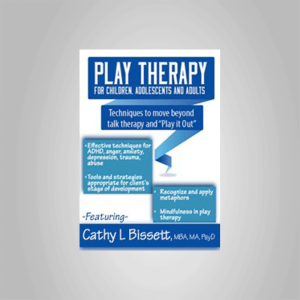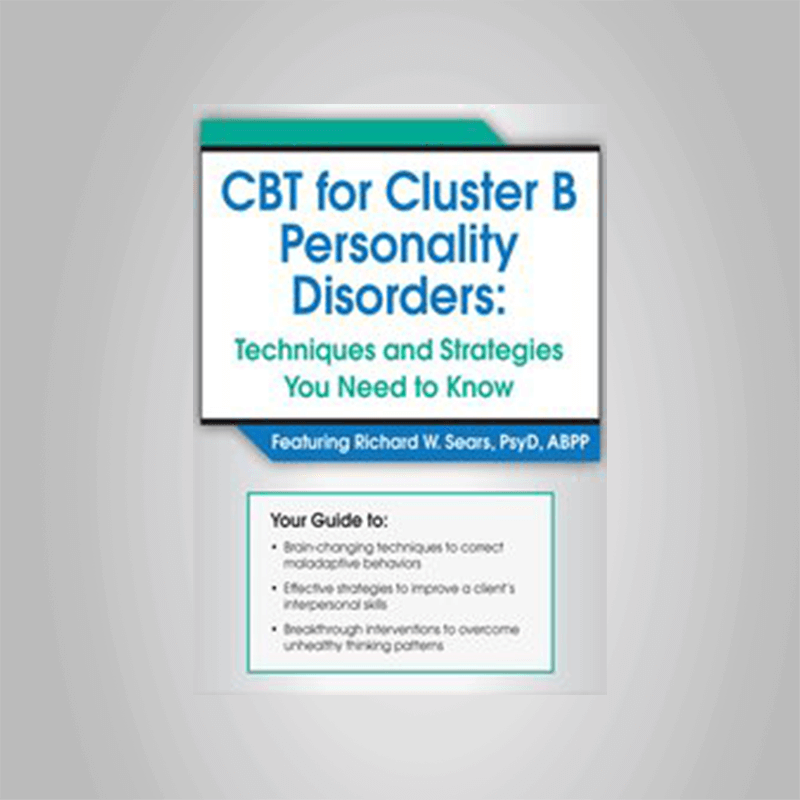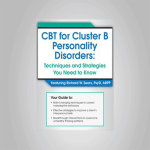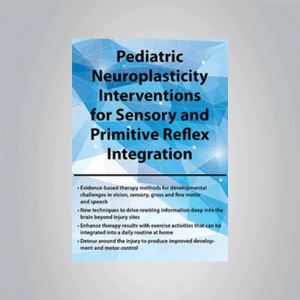CBT for Cluster B Personality Disorders: Techniques and Strategies You Need to Know – Richard SearsClients with cluster B personality disorders (borderline, antisocial, histrionic, and narcissistic) can be amongst the most challenging for therapists. Clinicians who are not properly trained can inadvertently make clients worse, and can even put themselves at risk for licensure board complaints.However, when equipped with a deeper understanding of these disorders and the most effective principles and techniques, it can be extremely rewarding to witness the positive ripple effects that occur in these clients and their families.In this recording, join clinical psychologist and author Dr. Richard Sears for a compassionate yet direct approach for working with these individuals using cutting edge, practical interventions that are grounded in theory.You’ll learn:How even the most frustrating, maladaptive behaviors get conditioned and reinforced over time (and what to do about it)How recognize and interrupt unhealthy thinking patternsStrategies for breaking free of struggles with thoughts, feelings, and unhealthy behaviorsSkills for managing stress, pointers for managing stressful sessions, etc.How to avoid getting “sucked in†or hooked into the drama, “crisis of the weekâ€How to model presence with distress and emotional chaosWith solid principles and detailed case examples, Dr. Sears will bring these concepts and methods to life with passion and humor, giving you practical take-aways to use in your very next therapy session!Differentiate diagnostically between the four Cluster B personality disorders to accurately inform the treatment planning process.Utilize treatment interventions based in cognitive and behavioral approaches, including exposure, chain analysis. ABC records and challenging distortions, for clients diagnosed with personality disorders.Recognize and address potential clinical issues including crisis management, countertransference, boundary setting and self-care.Implement mindfulness-based interventions to increase clients’ psychological flexibility and decrease emotional intensity.What You Need to Know about Cluster B Diagnoses and ApproachesDiagnostic criteria: borderline, antisocial, histrionic, narcissistic personality disordersKey features of each disorder – differential diagnosis considerationsTop indicators of PD you won’t find in the DSM-5®5 things you probably never knew about cluster B personality disordersHow to avoid judgment and labeling and its importanceCBT Treatment Strategies and Techniques for Cluster B – Your Guide to Practical ApplicationBehavior – How to Approach Maladaptive Behavior, Self-Sabotage, Manipulation and Attention SeekingHow to shift behaviors that have been conditioned over a lifetimeDisrupting reinforcement5 things you may be doing that actually reinforces maladaptive behaviorPractical application of classical and operant conditioning conceptsRoots of behavioral therapyPsychoeducation: Increase clients’ insight into how their behavior is reinforcedExposure techniques: Build distress tolerance and momentum toward healthier choicesChain analysis: How to address a client’s feelings of hopelessness, improve awareness and identify precipitating factors and choice pointsCase study – Sam, The Man Who Blames Everyone ElseCognitive – How to Recognize and Interrupt Unhealthy Thinking PatternsHow to address negative beliefs about treatment, the experience of negative emotion and getting betterHow to adapt cognitive techniques specifically for Cluster BABC records and Challenging Beliefs WorksheetsSocratic dialogueCommon cognitive distortionsWhy challenging your client’s thoughts can make things worseCase study – Martha, The Woman Who Confused her Thoughts and Memories with RealityMindfulness and Acceptance – Break Free of Distressing Thoughts, Feelings and BehaviorsHow to increase psychological flexibility, decrease emotional intensity, and focus on the bigger pictureWhy mindfulness and relaxation are not the same thingMistakes with mindfulness – inadvertently encouraging avoidanceHow to adapt mindfulness and acceptance techniques for Cluster BCognitive defusion: Stepping back from thoughtsAcceptance: Letting go of controlMindfulness: Foster the ability to stay presentObserving the self: Develop a bigger sense of who you areIdentify values: Finding the “whyâ€Take committed actionCase study – Arthur, the Loving, Self-Centered FatherSpecial Clinical Considerations for Personality Disorder PractitionersCrisis management: Suicidal ideation/gestures, self-injuryCreate a clear crisis management plan to keep clients safe and avoid personal liabilityWhat you need to avoid – documentation considerations and more5 signs you need to check your boundariesPreventative measures – to avoid boundary violations and false reporting to licensure boardStrategies for recognizing and addressing countertransference – being honest without getting lostTop 3 tips for staying present in sessionBalance boundaries with compassionModel presence with distress, not joining the emotional chaosInternal messages – Not getting sucked inExercise: People that bother me
 Cayenne Pepper – Eric Thompson
₹1,494.00
Cayenne Pepper – Eric Thompson
₹1,494.00
 Cathy Bissett – Play Therapy for Children, Adolescents and Adults: Techniques to move beyond talk therapy and Play It Out
₹5,810.00
Cathy Bissett – Play Therapy for Children, Adolescents and Adults: Techniques to move beyond talk therapy and Play It Out
₹5,810.00
CBT for Cluster B Personality Disorders: Techniques and Strategies You Need to Know – Richard Sears
₹8,632.00






